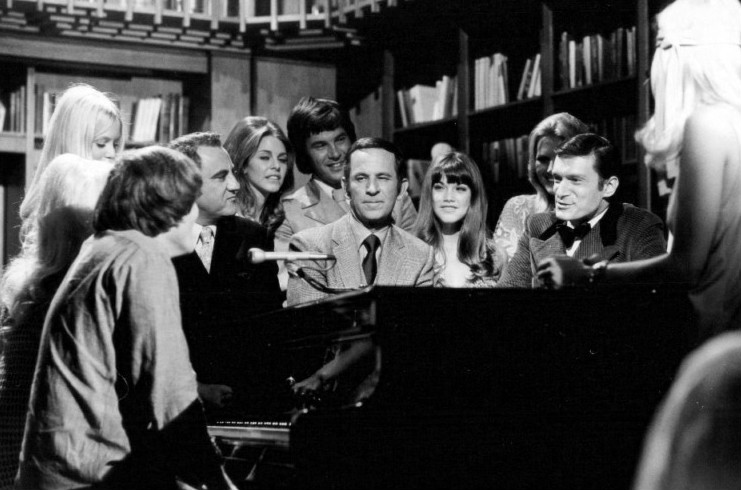From Hollywood to Silicon Valley, Americans have long looked west for guidance on what is new and important. It is unsurprising, then, that as Americans begin to think more critically about the endemic sexism in American culture, California is at the forefront of discussion. The downfall of both movie mogul Harvey Weinstein and former Uber CEO Travis Kalanick following allegations of sexual assault, harassment, and inequality have elevated excoriations of individual evils to discussions of larger societal ills. Among these discussions, the legacy of late Playboy founder Hugh Hefner has remained unsettled. While some cannot move past the sometimes perversely oppressive effects of Hefner’s life work, others shower him with praise for coaxing sex from the realm of taboo.
Sexism undoubtedly lies at the core of these Californian scandals. Analyzing Hefner’s ideology and cultural influence helps reveal some modern roots of that problem. After all, the American pornography culture that Hefner helped create allows Americans ubiquitous access to sex: In 2016, Americans watched over 200 millennia worth of content on Pornhub, the world’s most popular pornographic website. The juxtaposition of the view of Hefner and of Weinstein and Kalanick highlights how Americans are reticent to discuss structural problems in sex culture, even when addressing individual cases of harassment and assault. Thus, to promote gender equality we should acknowledge the pervasive presence of pornography and its use as a tool in sex education.
Commentators on Hefner’s legacy correctly note that among the various progressive initiatives he championed through his media empire, including civil rights and sexual liberation, Hefner seldom emphasized gender equality and popularized female objectification. But, perhaps surprisingly, a 2016 study showed that consumers who viewed non-violent porn had more egalitarian attitudes towards women than those who did not. Yet porn has been vilified in modern culture due to its often degrading depictions of sex, which has left adolescents with unrealistic and sometimes dangerous expectations. Although porn can precipitate sexual openness, its unrealistic and often violent nature justifies its position as a scapegoat for societal ills.
Porn’s proliferation due to technological advancement makes knowing its impacts even more pressing. Without comprehensive and pragmatic sex education, adolescents look to the internet to learn about the birds and the bees. Many see watching porn as the only replacement for what dismal sex education courses and uptight parents cannot provide. Of college students in Great Britain, 60 percent say they use pornography as an instruction manual for sex, despite knowing it to be unrealistic. And the lines between violent and nonviolent porn are easily blurred. A 2010 study of 304 popular porn scenes showed that 90 percent depicted physical aggression towards women, and almost half showed verbal abuse. To offset these negative effects, American consumers can start by looking to minimize the effects of pornography—especially in its more violent iterations—on a generation of males who, as a whole, strongly support gender equality. This can be achieved through more comprehensive sex education, which includes open discussions about the dishonesty of pornography.
With Pornhub seeing 650 times as many visitors each month as the most visited sex education site in the US, it’s clear that the American approach to sex ed has fallen short of its mark. Unfortunately, it has left teens using pornography as a supplement—or substitute—for their lackluster sex education. In contrast to the stricter educators in the United States, one professor at Aalborg University in Denmark suggested that pornography be used in sex education in order to dispel misconceptions and make the courses more realistic. By taking steps like this, we can decrease the stigma surrounding conversations about sex and promote a healthier culture.
The United States is still brimming with misogyny, and porn is a product of this scourge. But it should also be seen as a contributor to our nation’s sexism: Its proliferation—aided in large part by Hugh Hefner’s empire—has resulted in the use of porn in place of proper sex education, leading to a continuation of gender-based violence. Minimizing the negative effects of porn on millennials and on gender equality should be a priority. Using pornography as a tool in comprehensive sex education could accelerate a paradigm shift away from the normalization of abuse and toward a more sexually open society.
